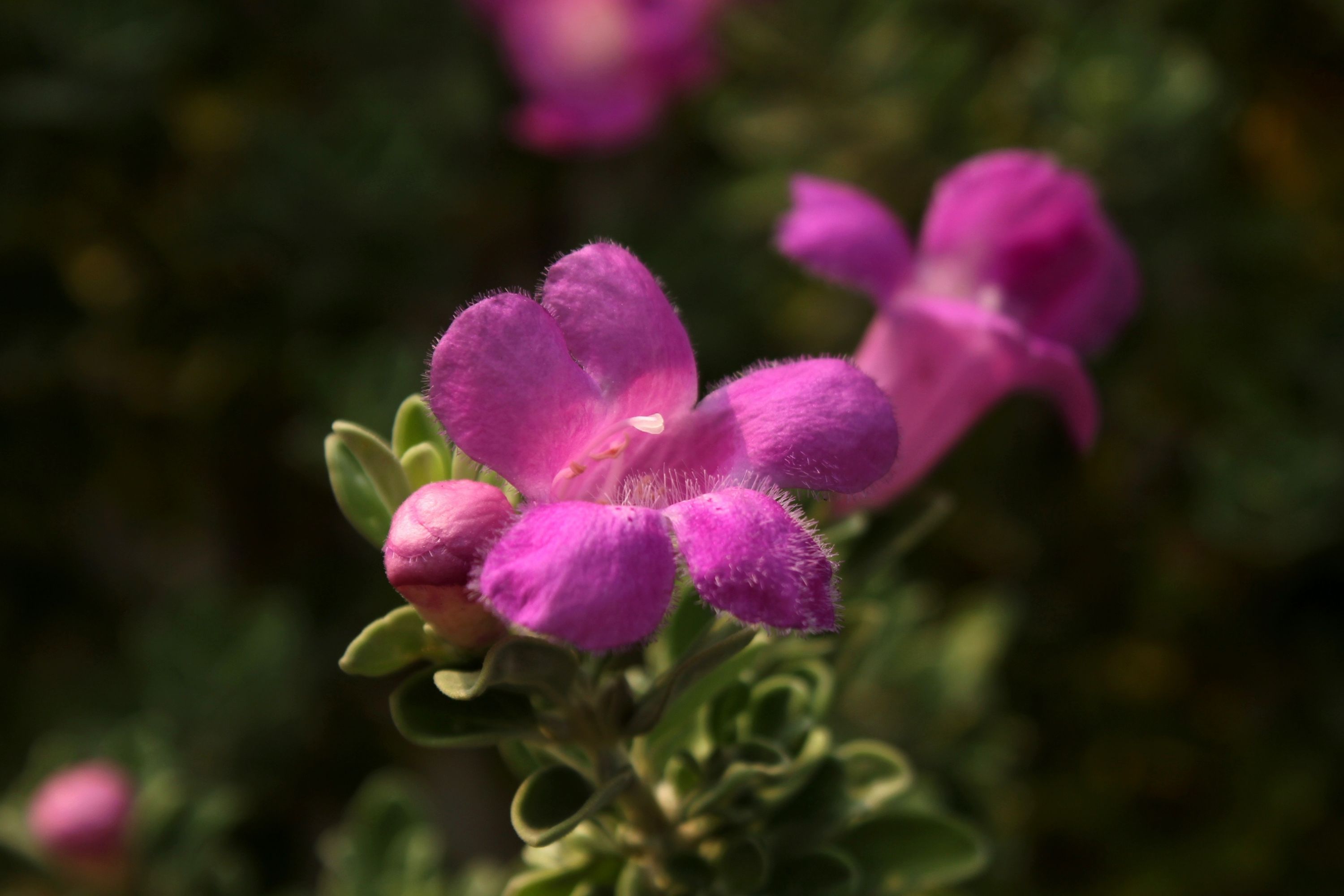Texas ranger
(Leucophyllum frutescens)

Description
Leucophyllum frutescens, commonly known as Texas ranger or Texas sage, is a small to medium-sized flowering shrub that belongs to the family Scrophulariaceae. Native to the Chihuahuan Desert and other regions of Mexico and the southwestern United States, this hardy plant has become a popular choice for xeriscaping and landscaping in arid regions. In this article, we will explore the various characteristics, growing conditions, and uses of Leucophyllum frutescens. Taxonomy and Nomenclature: Leucophyllum frutescens was first described by the French botanist André Michaux in 1803. The genus name Leucophyllum is derived from the Greek words leukos, meaning "white," and phyllon, meaning "leaf," referring to the silvery-gray leaves of the plant. The species name frutescens is a Latin word that means "shrubby" or "bushy," describing the growth habit of the plant. Physical Description: Leucophyllum frutescens is a slow-growing evergreen shrub that can reach a height of 6-8 feet and a width of 4-6 feet. It has a dense, bushy growth habit and a rounded or irregular shape. The leaves are small, oval-shaped, and covered with fine hairs that give them a silvery-gray appearance. The plant produces profuse, tubular, lavender, pink, or white flowers that are 1-2 inches in length and appear in clusters at the ends of the branches. The flowers bloom in late summer or early fall and can last for several weeks. Growing Conditions: Leucophyllum frutescens is a hardy plant that is adapted to the hot, dry conditions of its native desert habitat. It is drought-tolerant and can survive long periods without water once established. The plant prefers well-drained soil and full sun exposure, although it can tolerate some shade. It is hardy in USDA zones 8-11 and can survive temperatures as low as 15 degrees Fahrenheit. Propagation: Leucophyllum frutescens can be propagated from seeds or cuttings. Seeds should be sown in a well-draining soil mix in the spring, and cuttings can be taken in the summer from semi-hardwood or hardwood stems. Cuttings should be dipped in rooting hormone and planted in a well-draining soil mix. They can be covered with a plastic bag or placed in a propagator to maintain humidity and temperature. Uses: Leucophyllum frutescens is a popular plant for xeriscaping and landscaping in arid regions. It is commonly used as a hedge, screen, or border plant and can also be planted in mixed borders or as a specimen plant. The plant's attractive foliage and profuse, long-lasting flowers make it an excellent choice for low-maintenance landscapes. In addition, the plant is often used in traditional medicine to treat a variety of ailments, including respiratory problems and skin conditions. Cultivars: There are several cultivars of Leucophyllum frutescens that are popular among gardeners and landscapers. Some of the most commonly grown cultivars include: 'Green Cloud': This cultivar has dark green foliage and produces lavender-pink flowers. 'Compacta': This cultivar is a smaller, more compact form of the species and has a dense, bushy growth habit. 'Silverado': This cultivar has silver-gray foliage and produces lavender-blue flowers. 'Heavenly Cloud': This cultivar has lavender-blue flowers and a more open growth habit than other cultivars.
Taxonomic tree:







